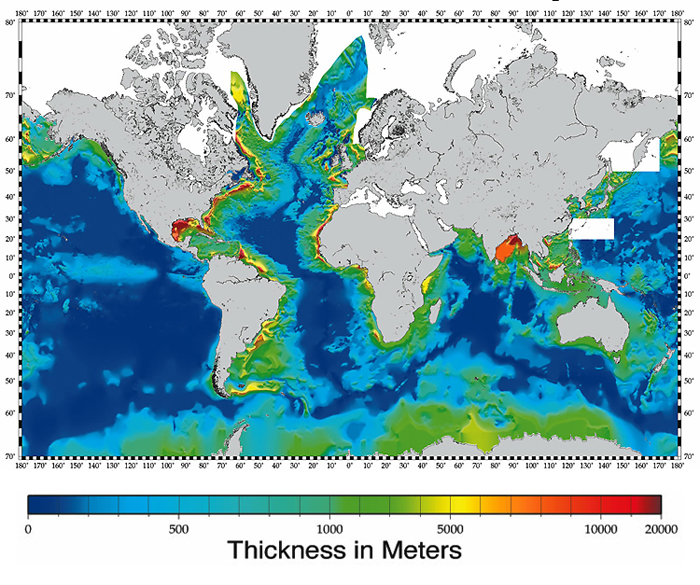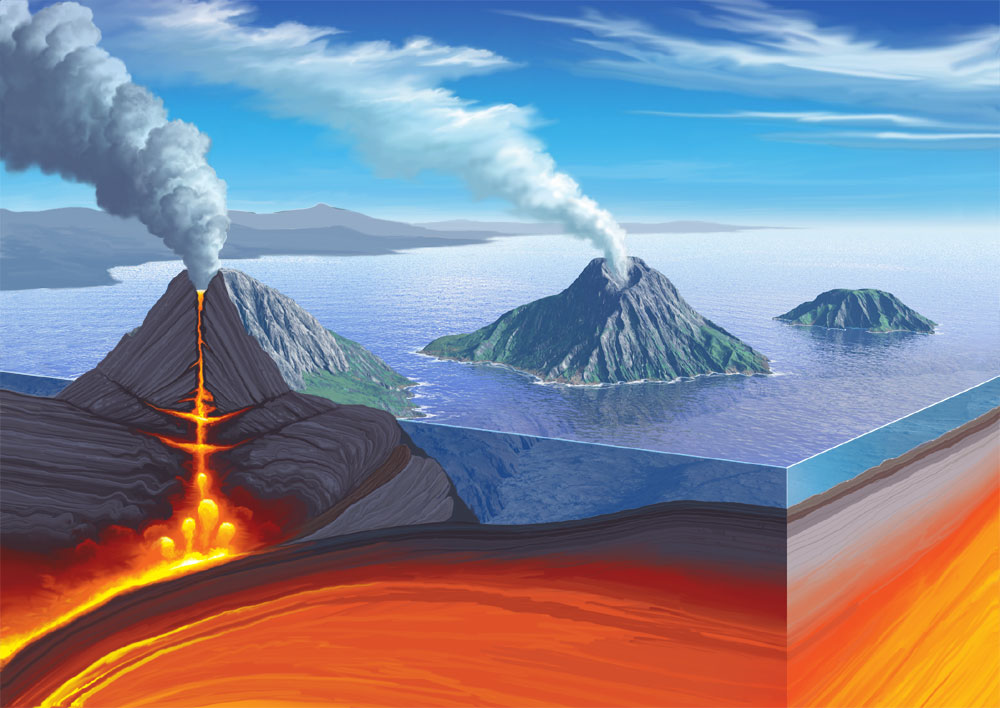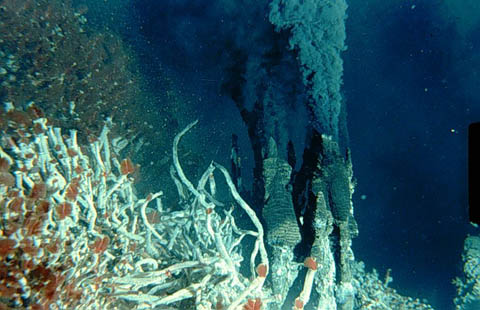Marine Sediments by mickeylab98 on GoAnimate
Video Maker - Powered by GoAnimate.
Thursday, February 28, 2013
Tuesday, February 26, 2013
Economy & Marine Sediments
1. What are some products that came from sediments?
- Building materials for roads and structures
- Toothpaste
- Paint
- Swimming Pool Filters
2. How much of the worlds energy comes from sediments?
- 1/3 of worlds oil and gas reserves comes from deposits within the sediments of continental margins
3. How important is sand and gravel?
- Sand and Gravel valued at more than $510 million
Web Quest Questions
1. In what ways are sediments classified?
- Classified by origin
2. List the four types of marine sediments?
- Lithogenous: Derived from land
- Biogenous: Derived from organisms
- Hydrogenous or Authigenic: Derived from water
- Cosmogenous: Derived from outer space
3. Where are sediments thickest? Are any areas of the ocean floor free of sediments?
- On the continental slopes and rises
- Few areas of ocean bottom are free of a sediment cover
SOURCE: http://earthguide.ucsd.edu/eoc/teachers/t_tectonics/images/sedthicksmall.jpg
SOURCE: http://upload.wikimedia.org/wikipedia/commons/a/a6/X-radiographs_marine-sediment_hg.jpg
- Building materials for roads and structures
- Toothpaste
- Paint
- Swimming Pool Filters
2. How much of the worlds energy comes from sediments?
- 1/3 of worlds oil and gas reserves comes from deposits within the sediments of continental margins
3. How important is sand and gravel?
- Sand and Gravel valued at more than $510 million
Web Quest Questions
1. In what ways are sediments classified?
- Classified by origin
2. List the four types of marine sediments?
- Lithogenous: Derived from land
- Biogenous: Derived from organisms
- Hydrogenous or Authigenic: Derived from water
- Cosmogenous: Derived from outer space
3. Where are sediments thickest? Are any areas of the ocean floor free of sediments?
- On the continental slopes and rises
- Few areas of ocean bottom are free of a sediment cover
SOURCE: http://earthguide.ucsd.edu/eoc/teachers/t_tectonics/images/sedthicksmall.jpg
SOURCE: http://upload.wikimedia.org/wikipedia/commons/a/a6/X-radiographs_marine-sediment_hg.jpg
Friday, February 22, 2013
Island Arcs & Ocean Trenches
1. They form at convergent plate boundaries when one plate is subducted beneath another.
2. An island arc is a chain of volcanoes parallel to a mountain belt positioned in an arc shape in a map view.
3. The deepest trench is the Challenger Deep trench.
4. Japan lies along the Japan Trench and encloses the sea of Japan which seperates the island from the Asian continent.
5. The arc shape results from the geometry of plate movement across the spherical earth, and the convex side of the arc points toward the open ocean.
SOURCE: http://worldbuildingschool.com/wp-content/uploads/2012/07/Island-Arc.jpg
SOURCE: http://www.yorku.ca/esse/veo/earth/image/1-10-17.JPG
2. An island arc is a chain of volcanoes parallel to a mountain belt positioned in an arc shape in a map view.
3. The deepest trench is the Challenger Deep trench.
4. Japan lies along the Japan Trench and encloses the sea of Japan which seperates the island from the Asian continent.
5. The arc shape results from the geometry of plate movement across the spherical earth, and the convex side of the arc points toward the open ocean.
SOURCE: http://worldbuildingschool.com/wp-content/uploads/2012/07/Island-Arc.jpg
SOURCE: http://www.yorku.ca/esse/veo/earth/image/1-10-17.JPG
Wednesday, February 13, 2013
Abyssal Plains & Hills
1. Abyssal Plains are the flattest places on Earth and are found underwater.
2. They can typically be found between the edges of the continents and great underwater mountain ranges; most common in Atlantic & Pacific.
3. Abyssal Plains consist of beds of volcanic rock topped with sediments that are up to thousands of feet thick.
4. Abyssal Plains cover about a third of the Earth's surface.
SOURCE: http://muffinman217div2.weebly.com/uploads/9/9/2/3/9923627/2559502_orig.jpg?350
SOURCE: http://oceansjsu.com/images/abyssal_plain_names.jpg
2. They can typically be found between the edges of the continents and great underwater mountain ranges; most common in Atlantic & Pacific.
3. Abyssal Plains consist of beds of volcanic rock topped with sediments that are up to thousands of feet thick.
4. Abyssal Plains cover about a third of the Earth's surface.
SOURCE: http://muffinman217div2.weebly.com/uploads/9/9/2/3/9923627/2559502_orig.jpg?350
SOURCE: http://oceansjsu.com/images/abyssal_plain_names.jpg
Tuesday, February 12, 2013
Careers in Ocean Science (Extra-Credit)
The four possible careers in ocean science we will consider will be: deep sea biologist, geophysicist, microbiologist, deep sea ecologist.A Geophysicist studies the physical properties of the Earth and can study anything from the Earth's atmosphere to the oceans. A job in this field usually requires a graduate degree. A microbiologist studies microscopic organisms, like fungi and bacteria. They primarily work in laboratory's analyzing these microorganisms. A deep-sea biologist studies the life down in the deep oceans. Getting a job in this field just requires motivation, not much education. A deep-sea ecologist studies the ecological and evolution of communities that live on the ocean floor and they typically travel anywhere they need to to produce their research. While all these careers are fascinating, the one that interests me is becoming a Geophysicist because I like learning more about the ocean floors.
SOURCE: http://www.nwma.org/Images/practi1.jpg
SOURCE : http://cathyduffyreviews.com/science/science-images/marine-biology.jpg
SOURCE: http://www.nwma.org/Images/practi1.jpg
SOURCE : http://cathyduffyreviews.com/science/science-images/marine-biology.jpg
Monday, February 11, 2013
Adaptations of Sea Creatures
1. Typical adaptations of animals living in deep caves are: lack of pigmentation, reduction in the size of eyes, and development of sensory mechanisms that do not depend on light for detecting food or predators.
2. Oxygen is not plentiful in these caves because there is no photosynthesis and very limited water circulation in the caves. The adaptations may be behavioral, morphological, physiological, -swimming slowly. Increased size of sensory body parts and reduce energy used up by unused body parts. Low metabolic rates and accumulation of lipids which contain about twice as much energy per gram as proteins or carbohydrates.
3. Adaptations are random and if they provide an advantage, the organism is more likely to survive and reproduce than other organisms with these same adaptations.
SOURCE: http://www.kidport.com/reflib/science/animalhomes/images/Eel.jpg
SOURCE: http://www.kidsdiscover.com/blog/wp-content/uploads/2012/03/Sea-Cave-1.jpg
2. Oxygen is not plentiful in these caves because there is no photosynthesis and very limited water circulation in the caves. The adaptations may be behavioral, morphological, physiological, -swimming slowly. Increased size of sensory body parts and reduce energy used up by unused body parts. Low metabolic rates and accumulation of lipids which contain about twice as much energy per gram as proteins or carbohydrates.
3. Adaptations are random and if they provide an advantage, the organism is more likely to survive and reproduce than other organisms with these same adaptations.
SOURCE: http://www.kidport.com/reflib/science/animalhomes/images/Eel.jpg
SOURCE: http://www.kidsdiscover.com/blog/wp-content/uploads/2012/03/Sea-Cave-1.jpg
Monday, February 4, 2013
Hydrothermal Vents
1. The temperature was completely unexpected Hydrothermal activity, that was "the biggest biological discovery on Earth."
2. The discovery was made in the very deep ocean.
3. The Tube Worms bled like humans.
4. Species are able to survive without sunlight through kinosynthesis, which is similar to photosynthesis, but in the dark.
5. Hydrothermal Vents are located more than 10,000 feet down in the ocean.
6. Life may have originated down in hydrothermal vents due to the facts that life exist down there.
2. The discovery was made in the very deep ocean.
3. The Tube Worms bled like humans.
4. Species are able to survive without sunlight through kinosynthesis, which is similar to photosynthesis, but in the dark.
5. Hydrothermal Vents are located more than 10,000 feet down in the ocean.
6. Life may have originated down in hydrothermal vents due to the facts that life exist down there.
Friday, February 1, 2013
Essential Questions NOAA
1. NOAA: Who are they, and what do the do?
- The Natural Oceanic and Atmosphere Administration, they focus on the conditions of the oceans and the atmosphere.
2. The intensity of a sonar echo tells scientists what?
- The depth of the oceans floor and the characteristics of the sea floor.
3. How does an R.O.V assist scientists?
- They understand the sonar data
4. Why are these studies important to the society?
- It is important to map where the animals in the ocean are and by protecting the habitat.
- The Natural Oceanic and Atmosphere Administration, they focus on the conditions of the oceans and the atmosphere.
2. The intensity of a sonar echo tells scientists what?
- The depth of the oceans floor and the characteristics of the sea floor.
3. How does an R.O.V assist scientists?
- They understand the sonar data
4. Why are these studies important to the society?
- It is important to map where the animals in the ocean are and by protecting the habitat.
Subscribe to:
Posts (Atom)













